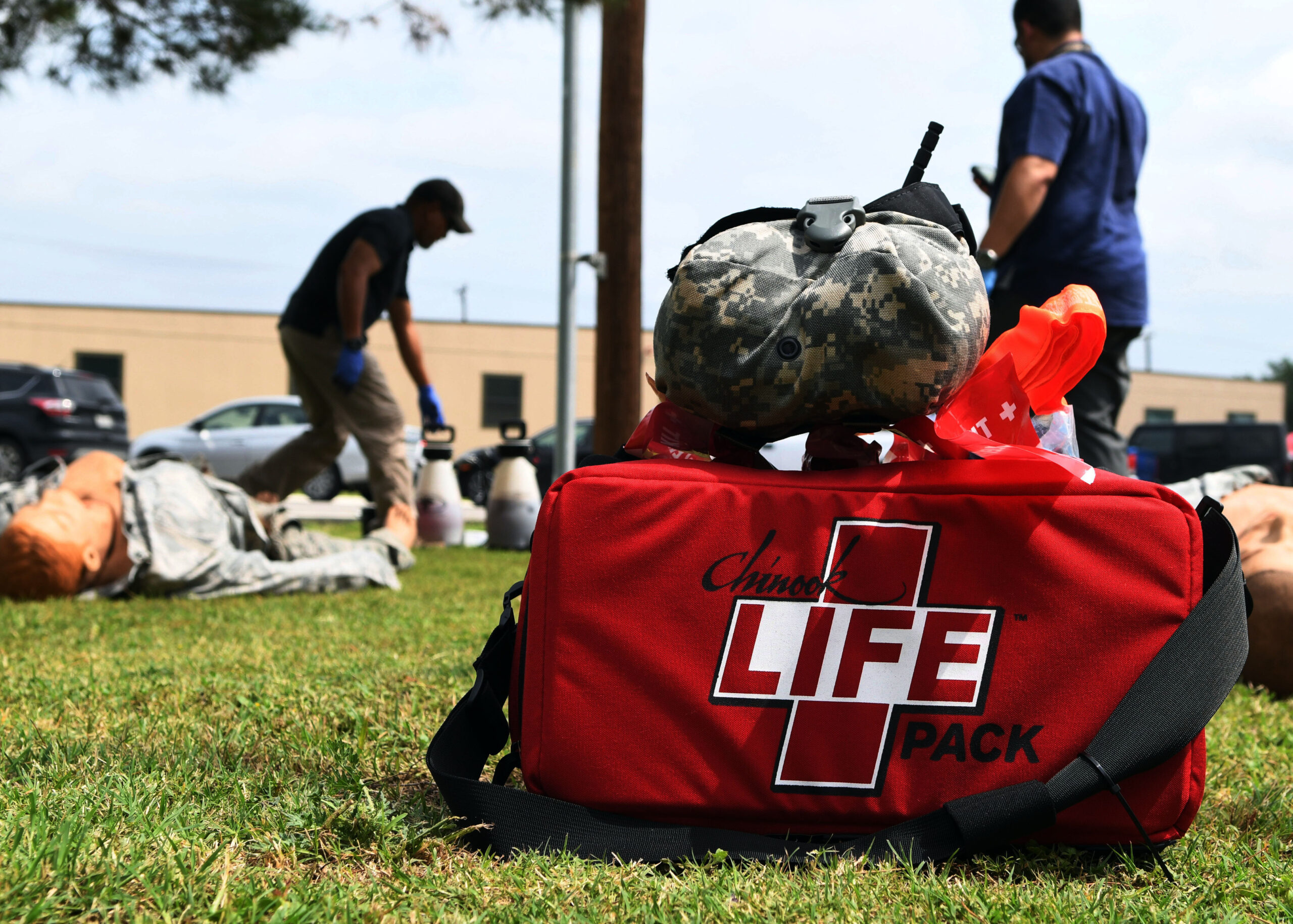Companies are racing to create an injectable foam that stops internal bleeding

U.S. Air Force photo by Staff Sgt. Amanda Stanford.
SUMMARY
In 2012, the U.S. Army Institute of Surgical Research released a study that detailed the most prevalent causes of battlefield deaths between 2001 and 2011. They found that 91% of potentially survivable deaths were due to hemorrhage. Of those deaths, 67% were from injuries to the trunk of the body.
Internal injuries in the abdomen can’t really be treated by combat medics. Direct compression, especially-treated gauze and other chemicals designed to clot wounds can’t deal with internal bleeding. Luckily, the Defense Advanced Research Projects Agency, DARPA, has been funding research in this area for a handful of medical engineering companies since 2010, and some of them came up with some incredible results.
One company, Arsenal Medical, created a foam that is injected into the body as two liquids, one is a kind of alcohol, the other is an isocyanate, a highly reactive family of chemicals used to create foams of all kinds. With this device, a field medic would simply insert the liquids near the wounded soldier’s belly button and the foam would expand to 30 times its size before turning solid, sealing wounded tissues. Doctors would be able to remove the solid mass in surgery.
In animal testing, Arsenal’s foam reduced blood loss in wounded pigs sixfold and the three-hour survival rate was 72%, a huge increase over the control group’s survival rate (wounded pigs that weren’t treated with the foam), which was eight percent. The problems with this foam are that some might have allergic reactions to the foam and it increases body temperature on par with a high-grade fever.
Another company, Critical Innovations, received FDA breakthrough status in 2019 for its Fast Onset Abdominal Management or FOAM. The FOAM is injected into the body by a special auto-stopping needle and solidifies at the body’s natural temperature, then expands to exert pressure on the wound. When the wounded troop gets to surgery, the surgeon is able to wash away the FOAM using cold water. Whatever is left behind can be safely dissolved by the body.
“In such patients, the probability of death increases approximately 1% for each 3-minute delay to surgery, meaning each minute counts,” Dr. Ross Donaldson, President & CEO of Critical Innovations and an emergency physician at one of Los Angeles’ main trauma centers, said in a statement.
Breakthrough status allows companies to speed up the development process through expedited regulatory assessment and review of medical devices that provide for more effective treatment or diagnosis of life-threatening or irreversibly debilitating human disease or conditions.
Surgeons at Massachusetts General Hospital, including a trauma surgeon who has worked with special operators for around a decade, tested a foam from Medcura. Called LifeFoam, it uses chitosan, a sugar that comes from the outer skeleton of shellfish. Chitosan has long been known as a blood clotting agent and is used to create LifeFoam’s expanding foam. In July 2022, the surgeons released a study where pigs were wounded and treated with the experimental foam to test for a survival rate of 180 minutes.
The average survival time for these pigs was an average of 150 minutes, where the untreated pigs survived for an average of 27 minutes.72% of pigs survived the wound, where none of the untreated pigs survived.
"This material has the significant potential to be a treatment option for massive non-compressible intra-abdominal hemorrhage, not only in military settings, but also on any occasion when swift transfers to a facility with surgical capabilities is not possible," the researchers concluded.
SHARE
